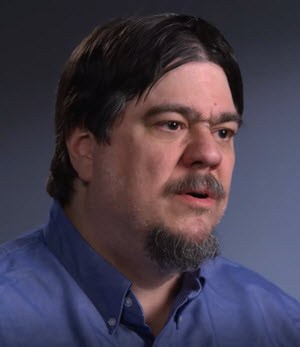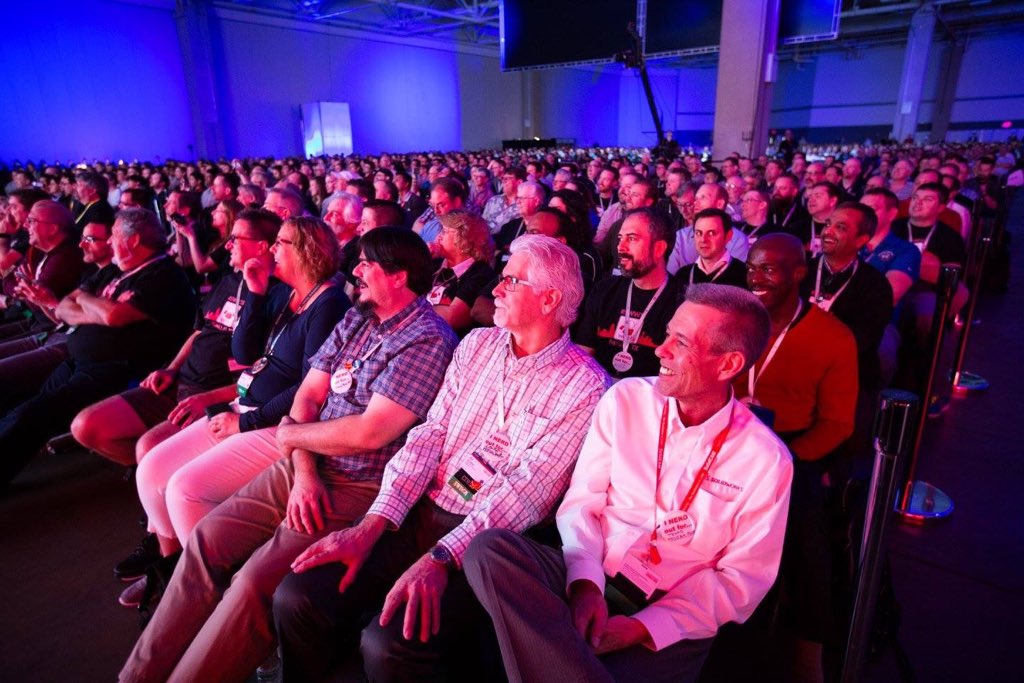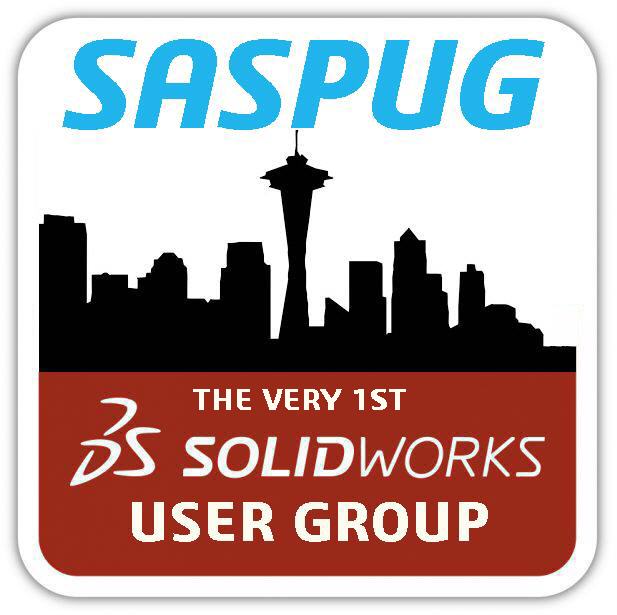Catching Up With Eric Beatty
We have enjoyed the chance to catch up with folks in the engineering, technical and design community. It’s been a great opportunity to learn more about their path in life – whether it be personal, educational, or professional. As we learn more through these discussions, it’s clear that there is a repetitive theme that seems to carry through every conversation – community.
It’s no surprise that our 2020 DriveWorks SWUGN Leader of the Year, Eric Beatty would be any different. Eric’s story from the beginning has been about education and sharing – with a true energy and enthusiasm for the work he does and continues to be a part of in the SOLIDWORKS Community.
Eric, thanks for the chance to catch up and share your story. Let’s start with learning a bit about your background and education:
“Thanks Heather, sure – well, I come from the small town of Waterville, Ohio. It’s about 10 miles from Toledo; home of the Jeep, Klinger from M.A.S.H. and The Mud Hens.
It’s very much an automotive area and certainly helped shape me. (He adds jokingly) I was raised in a ‘mixed faith’ family – my mother was a Lutheran and my father was a General Motors man.
After high school, I went to Bowling Green State University in 1981 with the intent of studying motion picture production/film studies. While I had no intention of becoming the next Federico Fellini, I really wanted to study and get into special effects.
As a child of the ’60s and ’70s, I was really interested in space and science fiction. Whether it was watching the Apollo landing or the overall evolution of the space program – everything that was happening around me helped inform my decision to start down this path.
I’ve always been a ‘hands-on’ person – I enjoy tinkering with things and learning how they work.

During my time at Bowling Green, I realised that being unable to attend a film school in a place like USC or UCLA was probably not going to be an option for me. My schedule included electives and I took an ‘Intro to Programming course.
This course introduced me to Fortran and the IBM 80-column punched card. This was a fun and pretty fascinating area and I kind of took a shine to it. I changed my major to Computer Science and continued down this path for about 2 years.
There was always something ‘nagging’ at me though – I liked the hands-on, mechanical stuff (I was always tinkering around with cars and other things). The Technology College had a program that I really liked, and I took a class on building an internal combustion engine – I loved it.
As I started looking at this more, I changed my major once again – this time it was to Mechanical Design Technology – that’s where I knew I wanted to be and stayed. Over the course of my undergrad work, I developed a friendship with a member of the faculty – Dr. Ernest B. Ezell, Jr. He took a liking to me and he became my mentor and friend.
The Technology College required 3 co-operative experiences. As such, I was placed at a company called Zeller Corporation (they made universal joints and front-wheel drive components). They did government contract work and evolved their business to meet the demand – they produced drive train components, spark plug components and at one point they manufactured 20/30 MM ammunition.
My work with them started on the drafting table. They had one computer in the office with AutoCAD and one guy that worked on it (Earl). During a week that Earl was on vacation, I was approached by my manager who basically asked me to sit at this AutoCAD workstation.
He knew I didn’t know much about the software, but he did know was that the company had spent a lot of money on it and he didn’t want the owners to come by and see it not being used! Over the course of that week, I was able to learn enough to get one very simple drawing done.
They purchased a 2nd workstation and put it near me at the drafting board where now I could work on both. This was around 1986 and it was still the time when to run software like AutoCAD you had 2 floppy discs – one used to boot up the program and then the 2nd to run the program. Turns out that I worked all 3 of my required co-ops at Zeller and even afterwards I stayed on and worked both part-time and half time as my coursework allowed.
When I finished my undergraduate degree in 1988, I often describe my 7-years spent as the “best 4-year education I’ve ever had!”
Tell us how your mentor, Dr. Ezell got you involved in education?
After finishing my undergrad, I went to work for a company that made custom conveyors and material handling equipment. During my time there, Dr. Ezell and I kept in touch.
One day, he called me and said “Eric, you know how we said how someday you would like to teach a class – well it’s someday.”
Seems the university needed someone right away to teach the Design 304 class. Now, I had NO experience in the content needed for that class – but Dr. Ezell knew what I had been doing for work and said “…just teach them what you do for a living.”
So, the school was able to rearrange the course so I could teach at night. Mid-semester, I was let go from the conveyor company and the overall engineering job market dried up in NW Ohio.
Luckily, after that semester, I taught another and as I was getting ready for a 3rd semester, the university instituted a hiring freeze. It was then that Dr. Ezell came to me with this idea – if I applied to the graduate program I could be hired on as a teaching assistant and receive a paycheck as well as free tuition. SOLD!

Fast forward a bit to 1994 when I not only earned my Master of Science in Manufacturing Technology but also was engaged to be married! My wife and I then relocated to the Pacific Northwest, where I started my position at North Seattle Community College, where I stayed for 12 years.
Eric – is it true that the Seattle Area SOLIDWORKS Power User Group got its start with you?
Yes! My position at the North Seattle Community College had a ‘tenure track’. Part of this program was professional development. This could be participating in activities on campus, attending events for skills development or serving on committees. All of these things allowed you to earn credit toward salary advancement. Often I would attend AutoCAD demos in the area as well as user groups that had been established. At one point in early 1996, I’d read about a place in Bellevue called “Personal Workstations” that was hosting a demo for a 3D CAD software that I had not seen yet – a program called SOLIDWORKS.

After sitting through the demonstration, I approached the presenter (Bart Rankel) to have him sign off that I had attended the event (requirement to get credit for attending). Jokingly, I often tell people that once the demo was finished and I ‘found my eyeballs that had leapt out of my head.’
We spoke for a bit and I inquired about the educational pricing of the software. During our chat, Bart indicated that he didn’t have any place to do training on SOLIDWORKS in the area and would my school consider renting out classrooms. We came up with a plan that would include the use of space at the school in consideration for modified pricing on multiple seats of SOLIDWORKS. While not the first school, NSCC were early adopters of teaching SOLIDWORKS in the country.
My past experience with user groups had been positive and I really wanted to host a SOLIDWORKS user group once the software was in place at the school.
On April 2, 1996, we hosted our inaugural SOLIDWORKS User Group meeting in my classroom at North Seattle Community College with about a dozen students and a dozen SOLIDWORKS customers.
This group would eventually become the Seattle Area SOLIDWORKS Power User Group. Who would think that 25 years later it would still be going strong!
There’s More to Come
It was a pleasure speaking to Eric, learning more about his background, his education and how he started the Seattle Area SOLIDWORKS Power User Group.
Stay tuned for Part 2 of our interview with Eric, where he will be talking more about his times at SOLIDWORKS World/3DEXPERIENCE World, his favourite thing about the SOLIDWORKS Community and what he sees for the future of SOLIDWORKS User Group Meetings.
Supporting SOLIDWORKS User Groups
Want to find out more about how DriveWorks can support your SOLIDWORKS User Group?
Get in touch with us to find out more!